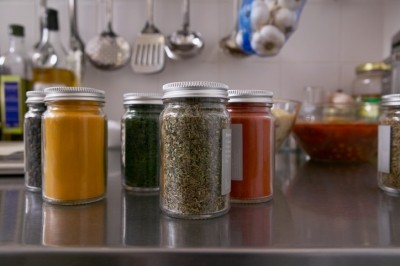Beyond TV dinners: Frozen meals serve as gateway to global flavors

This evolution from the early days of TV dinners in the 1950s reflects a significant shift in the frozen food industry. Today, nutrition and taste are core elements in delivering authentic global flavors, meeting the growing consumer demand for both convenience and culinary exploration.
“The frozen food category is dynamic … in responding to consumer needs and introducing new flavors, new taste profiles that perhaps we were not seeing in the frozen food aisle a number of years ago … and it was a category that saw a huge disruption and shift in growth during the COVID-19 pandemic,” Mary Emma Young, VP communications at the American Frozen Foods Institute (AFFI), told FoodNavigator-USA.
Overall, frozen food sales for the year totaled $84.4 billion, with $6.8 billion generated in July alone, according to AFFI’s retail market insights report. Meals and desserts were the largest sellers in July

, with $2.1 billion and $1.6 billion in sales, respectively, while beverages saw the lowest sales at $22 million.
For the 52-week period ending Dec. 31, 2023, the frozen meals category saw $13.8 billion in dollar sales, representing a 3.4% decline in dollar sales and a 2.6% decrease in units compared to the previous year.
Frozen meals offer consumers flexibility to explore diverse flavors at home
Millennials and Gen X are driving growth in frozen meals, making up 38% of core consumers in the category, Young said. As the cost of dining out pinched consumers’ wallets in the last several years, retail-based food purchases reflected more cooking at home, she added.
While food prices are projected to decelerate in 2025 over 2024, according to the USDA. The USDA forecasts a 2.2% increase in overall food prices in 2024, with food-at-home prices rising by 1%. In 2025, total food prices are expected to increase by 2.0%, with food-at-home prices seeing a below-average increase of 0.7%.
Looking forward, frozen meals will offer more experimentation with global flavors and fusion cuisine, and a more diverse subset of foods in the frozen category that provide a wide range of authentic global cuisines, Sabah Ashraf, CEO of Indian frozen meal brand House of Kajaana, predicts.
“People are becoming more culturally diverse in their tastes and frozen food is a great way to explore new flavors conveniently as it also has a longer shelf life, so you can really stock up,” Ashraf told FoodNavigator-USA.
‘Entering a new era of frozen food’ without sacrificing health or flavor
Consumers’ notions around convenience also evolving with quality ingredients and nutrition as key components in frozen food.
“We are entering a new era of frozen food where convenience does not have to mean compromising on health or flavor. Consumers are expecting higher quality, and retailers are responding by making space for more premium options,” with the potential for consumers to purchase larger home freezers or adding secondary freezers to accommodate more frozen options, Ashraf added.
Convenience and long shelf-life serves as potential solution for ‘hidden food deserts,’ food waste
Frozen foods could address “hidden food deserts,” and improve access “where fresh, authentic global cuisines is not readily available,” Ashraf said.
She added, “Consider frontline workers like teachers, doormen, nurses and late-night shift workers who might have easy access to diverse dining options during their work hours, or shoppers in parts of the country, where there might not be many Indian restaurants. Frozen meals can bring these global flavors right to their homes or workplaces, ready in minutes when they want it.”
Young echoed these sentiments, adding that frozen meals’ longer shelf life offer a “total meal solution” beyond taste and nutrition, but also a reduction in food waste and food prep times.
Translating Indian cuisine into a frozen, convenient format
House of Kajaana’s frozen Indian meals are a translation of Ashraf’s love of Indian cuisine and deliver authenticity “through the convenience of frozen meals,” she said.
The brand entered an established category of Indian frozen meals where the flavors are familiar, but House of Kajaana is focused on offering premium and nutritious ingredients that are and free from gluten, soy, dairy and seed oil, Ashraf explained.
“It is all about making authentic Indian flavors accessible to more people, regardless of their dietary restrictions, nutritional preferences or cooking skills,” she said.
For its retail launch, House of Kajaana introduced its three SKUs, which featured a mix of familiar and novel flavors like Cauliflower Tikka Masala with Pea and Cumin Basmati Rice, Coconut Malabar Curry with Pumpkin Seed and Basmati Rice and Roasted Butternut Saag with Tomato Basmati Rice. Ashraf highlighted that the launch of these flavors was strategic and that the launch of unfamiliar flavor profiles would be “a big ask for a new brand in the frozen aisle,” she said.
Each frozen meal includes a “bejeweled” rice blend with herbs, seeds and legumes, to create the option of individual or shared consumption, according to Ashraf.
The brand relies on cooking techniques, for example charring its cauliflower before freezing to ensure a smokey flavor and crisp texture, and viscosity tests to ensure consistency for all sauce batches, Ashraf explained.
“Our use of technology is all about supporting the handcrafted nature of our meals and ensuring that when you reheat them, you get a dish that tastes like it came straight from a restaurant kitchen,” she said.
She added, “We also pay close attention to our spice blends. Indian cuisine is known for its complex, layered flavors, and we work hard to ensure these come through even after freezing and reheating. We have found that certain spices actually bloom beautifully when the meal is reheated, creating an aroma that is reminiscent of freshly cooked Indian food.”
Jane Foodie embraces familiarity with ‘heat and eat’ flash frozen meal solutions
Jane Foodie’s flash frozen and par-baked meals are made with natural ingredients and contain low sodium, according to the company. With comfort food-inspired dishes like its Guiness-infused Irish Beef Stew, Italian Sausage and Orzo, Baked Ziti with Sausage Marinara and Bolognese Sauce, the company’s flash freezing process allows for the ingredients to maintain its flavors, texture and nutrients without preservatives or additives, Jane Carroll, founder, Jane Foodie, told FoodNavigator-USA.
“We differentiate from other frozen foods … [by] using ingredients you would find in any kitchen and bringing true homemade flavors in a frozen product that you simply heat and eat. …We are simply bringing those dishes to the future with new technology to a healthier option with a twist,” Carroll said.
The flash freezing process is a pivotal technology that drives Jane Foodie’s business, Carroll said. The process takes freshly cooked or baked food from the oven and places it into a flash freezer that drops the temperature to negative 40 degrees in 90 minutes, while preventing ice crystals which can impact the overall profile of the dish.
“When reheated, you get the same results as if it came right from the oven,” Carroll said.
Jane Foodie offers “large” single or “regular” two-person servings, where “you take what you want and leave the rest in the freezer” and potentially reducing food waste, she added.
Young also noted that technology is evolving with frozen meal. For example, multi-ingredient dishes that use individual quick-freezing techniques (IQF) that “lock in that sensory experience that you would expect from any other meal,” while reducing issues like freezer burn, she said.
“At the end of the day, [frozen food] is just a change in temperature state and with what you are seeing with advancements in IQF and the storage and transportation of food, you have the ability to really maintain that quality as well. … It also creates a lot more of experimentation from consumers where you can try [something new],” without a significant investment, Young added.
Communicating flavor
One of the challenges within the category is communicating quality and flavor before point of purchase, Carroll pointed out. Taking insights from its catering company, Jane Foodie discovered that its customers “were looking for more simplistic, uncomplicated, convenient comfort foods,” she said.
The company also relies on social media, asking its followers what other meals can have the “Jane Foodie spin,” Carroll added.
Carroll continued, “When you are buying a frozen meal, you are really taking a leap of faith. You are committing to buying it, taking it home, heating it up and only then discovering if you like it.”
To communicate flavor, House of Kajaana uses photos on the packaging so customers “see exactly what they are getting,” in addition to offering familiar flavor profiles without being spicy, “which helps build trust," Ashraf said.
The brand also relies on in-store demos, which “breaks down preconceptions about frozen food and often leads to immediate purchase,” Ashraf added.











